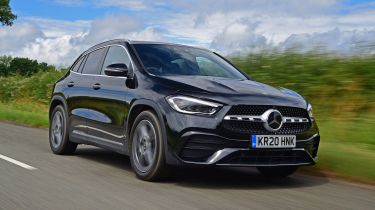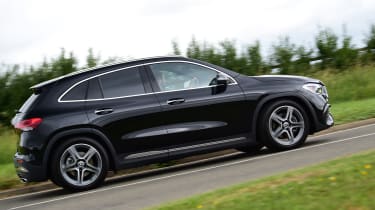Mercedes GLA review - MPG, CO2 and running costs
The GLA petrol plug-in hybrid version is the most efficient choice, but make no mistake, running any Mercedes isn’t cheap

Mercedes has given customers a choice of refined petrol and diesel engines for its smallest SUV, but for those seeking the lowest running costs, the GLA 250 e plug-in hybrid model should be at the top of the list.
Priced from around £42,000, the 250 e offers a claimed all-electric range of around 38-39 miles, with combined fuel consumption of up to 201.8mpg. However, to achieve this impressive figure, you’ll need to ensure you keep the battery topped up and plug-in to recharge whenever possible. CO2 emissions of just 32g/km also mean there’s no first-year road tax to pay, while company car drivers will benefit from a low BiK tax rate.
Since the GLA was launched, Mercedes has also introduced the EQA. It’s a similar size and has many of the same styling cues as the GLA, while it doesn't cost too much more to buy than the plug-in hybrid model. The EQA manages up to 264 miles between charges and accelerates up to 62mph from a standstill in a reasonably brisk 8.9 seconds.
The petrol GLA 180 and 200 models both offer a maximum 42.8mpg on the combined cycle, with CO2 emissions from 151g/km. Opting for the more powerful GLA 250 means more time spent at the fuel station, as it only returns 37.2mpg. It’s CO2 emissions are also higher at 172g/km.
The diesel versions obviously perform better than their petrol counterparts in terms of economy - the 200 d achieves up to 53.3mpg. The 220 d is still reasonably competitive with a maximum of 50.4mpg, and CO2 emissions of 148g/km.
Insurance groups
The entry-level GLA 180 Sport is in insurance group 27, so premiums are going to be on the high side. The 250 petrol variant is in group 36, while the Mercedes-AMG cars occupy groups 41 to 44.
Equally, there’ll be no insurance bargains if you opt for an oil-burner, with the base 200 d Sport in group 31. The top-spec 220 d AMG Line Premium Plus sits in group 37.
Depreciation
You’d expect sound residual values from a premium manufacturer such as Mercedes, and the GLA doesn't disappoint. Over an average ownership period of three-years and 36,000 miles, the GLA holds onto around 62 per cent of its original value. The plug-in hybrid model performs slightly better than average at around 67 per cent.






